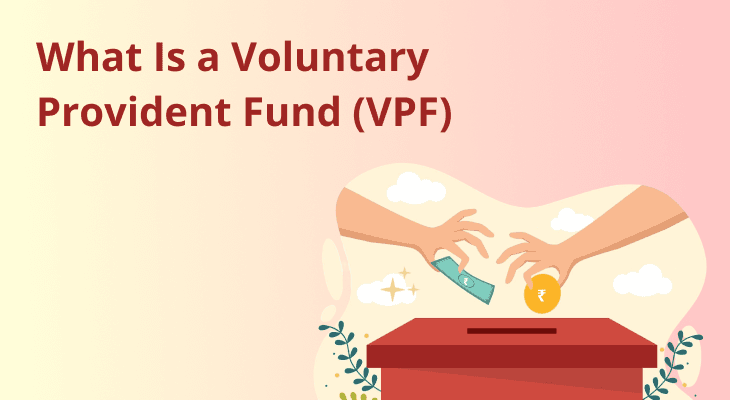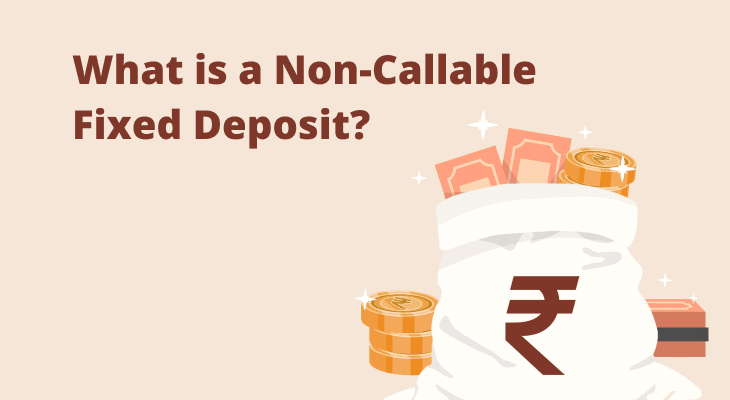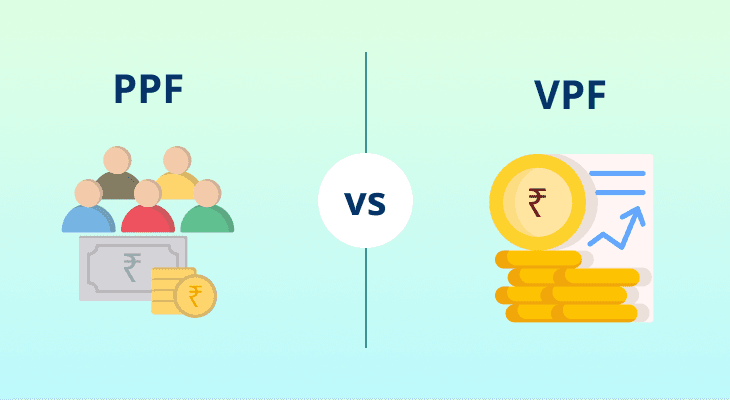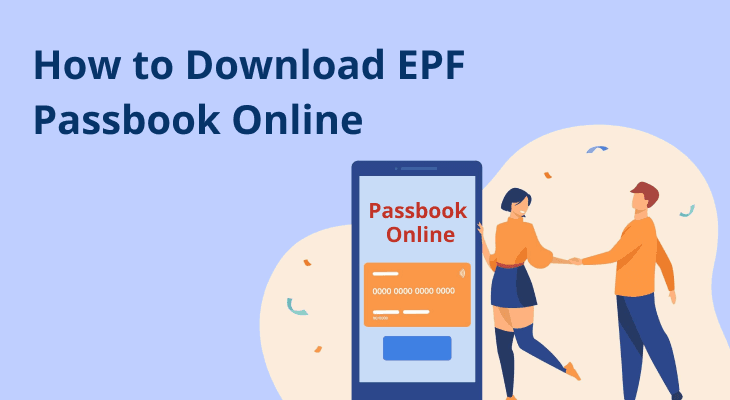
What Is a Voluntary Provident Fund (VPF) & How Does It Work?
Arranging a reliable income stream for the years after you stop drawing a salary is a major goal in personal finance. Indian employees have a wide range of products at hands: equity mutual funds, national pension schemes, insurance-cum-investment plans, or plain fixed deposits. But very few options combine sovereign backing, automatic salary deduction, generous tax breaks, and the power of long-term compounding as neatly as the government-run provident-fund family.
Within this family, the Voluntary Provident Fund (VPF) is relatively less-known compared to its compulsory counterpart, the EPF. Yet VPF can be a great option for workers who want to funnel surplus salary into a safe, tax-efficient, and low-maintenance instrument. By letting you raise your own contribution far above the statutory 12%, VPF turns your payslip into a disciplined wealth-building engine without needing you to monitor markets or juggle monthly investments manually.
This article examines the VPF in detail, covering what the scheme is, how it plugs into the EPF infrastructure, the fine print on limits and withdrawals, the latest tax rules, and the investor profile that benefits from it the most.
What is a voluntary provident fund (VPF)?
A Voluntary Provident Fund is an employee-initiated top-up to the compulsory EPF deduction. Instead of stopping at the mandated 12% of basic pay plus dearness allowance (DA), you as an employee can push in any additional amount (up to a full 100% of that wage base) into the same EPF account. No separate passbook, no extra account opening: the HR department will simply instruct the payroll to funnel the elected amount each month. Notably, all the money (statutory EPF plus voluntary VPF) earns the same annual interest rate declared by the Employees’ Provident Fund Organisation’s (EPFO) Central Board of Trustees. For the current financial year, FY 2024-25, the rate is 8.25%, formally approved by the Union government on 22 May 2025 and now being credited to member accounts.
How does VPF work?
Below are the key characteristics of the Voluntary Provident Fund.
#1. Initiation
To start, you need to file a simple request (typically a one-page form or a short email) to your payroll or finance team, stating the extra percentage or rupee amount that you want to divert to VPF each month. Most employers allow changes only at the start of a financial year, so plan the figure carefully.
#2. Contribution limits
EPF law fixes your compulsory share at 12% of basic + DA, but VPF permits you to raise your own share to any level up to 100% of that pay base. The employer sticks to its statutory 12% and does not match the voluntary add-on.
#3. Interest rates
The EPFO declares one uniform rate for EPF, VPF, and other provident-fund accumulations each financial year. At 8.25% for FY 2024-25, the yield outpaces most large-bank fixed deposits while carrying the same sovereign guarantee. Interest is calculated on the running monthly balance but posted in one lump after the year-end closing.
#4. Lock-in and withdrawal
VPF inherits all EPF withdrawal norms. Ideally, the corpus rests until retirement or superannuation, but partial pulls or advances are allowed for specific milestones like purchase or construction of a house, higher education of children, wedding expenses, life-threatening medical treatment, or home-loan repayment. If you extract funds or close the account before completing five continuous years of service, the accrued interest becomes taxable and TDS may apply.
Benefits of VPF
- High yield anchored by sovereign backing: With an interest rate exceeding 8% and a government guarantee, VPF routinely beats bank FDs and small-savings certificates of comparable tenor while exposing you to virtually zero credit risk.
- Triple-E tax status: Contributions up to ₹1.5 lakh a year will benefit from tax exemption allowed under Section 80C. Interest is exempt while the account runs, and maturity proceeds stay tax-free, provided you do not break the five-year service rule.
- Additional tax benefits: Since FY 2021-22, interest earned on your own EPF + VPF contributions above ₹2.5 lakh in a year is taxable. The ceiling is ₹5 lakh for employees whose employer makes no contribution to their EPF account.
- Powerful compounding on a growing base: Because interest is credited on the entire balance (statutory plus voluntary) the corpus snowballs rapidly, especially if you begin VPF early in your career and keep adding through annual increments.
- Hands-free discipline: The deduction happens before the money reaches your bank, eliminating the behavioural friction of manual investing and ensuring you “pay yourself first” every salary cycle.
- Seamless portability: Your Universal Account Number (UAN) links all future EPF memberships, so the VPF amount carries along automatically if you switch employers, keeping compounding uninterrupted.
- Faster interest credit: Now, 8.25% interest for FY 2024-25 will reach virtually all accounts by mid-July 2025, thus improving cash-flow visibility for members.
- E-nomination without employer sign-off: Employees can now update or add nominees through the EPFO portal instantly, making claim processing smoother for VPF as well.
Eligibility, how to start, and withdrawal rules
Only salaried personnel working for establishments registered under the EPF Act can opt for VPF. If your employer is outside EPF coverage or you are self-employed, VPF is not available for you.
Starting contributions
Here’s how you can start contributing to VPF:
- Notify HR or payroll in writing.
- State the exact rupee figure or percentage of salary.
- Sign any internal declaration form.
- Deductions begin the next payroll cycle and show in your EPF passbook under the same Member ID.
You generally cannot scale down or exit mid-financial-year unless you leave the job or HR grants an exception.
Withdrawal conditions
Withdrawal from VPF is allowed only under some specific conditions:
- Retirement, resignation, or termination: Full balance, including VPF, becomes withdrawable.
- Two months of verified unemployment: Allows complete withdrawal.
- After five continuous service years: Any withdrawal remains tax-free.
- Specific life events: EPFO permits partial advances for child’s education, marriage, house building, or critical illness.
Withdrawals made before the five-year mark will attract tax on the interest at your slab rate, and may trigger TDS.
VPF tax benefits
Stage | Tax treatment |
|---|---|
Contribution | Eligible for Section 80C deduction up to ₹1.5 lakh per financial year |
Interest earned | Entirely tax-free if the account runs five consecutive years and your own contributions stay within ₹2.5 lakh (₹5 lakh where employer share is nil) |
Maturity value | Fully exempt when withdrawn after five continuous service years |
Remember, the ₹2.5 lakh (or ₹5 lakh in some cases) limit applies to the aggregate of employee EPF plus VPF contributions, not just the voluntary portion.
Who should invest in VPF?
VPF is ideal for the following investor profiles:
- Mid-career or senior salaried employees with surplus cash and a conservative risk appetite.
- Individuals who have already maxed out EPF and PPF but desire more tax-shielded debt exposure.
- Long-horizon investors unwilling to track market fluctuations yet eager to exploit compounding.
On the other hand, VPF is less suited for, or unavailable to:
- Self-employed professionals, freelancers, or gig workers who are not covered under EPF.
- Investors requiring high liquidity or those comfortable taking higher risk for potentially bigger returns.
- Anyone whose cumulative EPF + VPF already breaches the ₹2.5 lakh annual limit and they are looking for further tax-free investment avenues.
How to check your VPF balance
Because VPF nests inside your EPF ledger, the standard Universal Account Number tools can help you track your balance. Here are the key steps to check your VPF balance:
- Navigate to epfindia.gov.in and go to Our Services → For Employees → Member Passbook.
- Log in with your UAN and password.
- Select your Member ID and hit View Passbook.
The downloadable PDF separates employer share, employee statutory share, and any voluntary additions, along with cumulative interest.
Adjusting VPF contributions after a salary hike
Many employees opt for VPF at the start of a financial year and then receive an increment midway through. If the extra income goes straight into spending, your savings rate declines. To maintain compounding momentum:
- Review your new basic + DA immediately after an appraisal letter is issued.
- Compute headroom below the ₹2.5 lakh contribution ceiling by projecting remaining months in the year.
- Submit a revision request to payroll. Most employers allow at least one mid-year change when supported by a promotion or hike letter.
- Confirm in the next pay slip that the fresh deduction amount reflects.
By calibrating VPF after each raise, you ensure that a fixed percentage of new salary also compounds at 8.25%, accelerating corpus growth without lifestyle creep.
Conclusion
For salaried Indians looking to accelerate retirement savings without stepping up the risk ladder, the Voluntary Provident Fund remains hard to beat. Its 8.25% yield, Section 80C deduction, and sovereign guarantee create a compelling mix of safety and growth. Payroll automation removes behavioural hurdles, while EPF portability keeps the account seamless across job changes.
Do keep an eye on the ₹2.5 lakh tax ceiling and the five-year rule, and match contribution levels to your liquidity needs and overall portfolio mix. If you have doubts, a certified financial planner can help align VPF with your broader wealth roadmap.
Additional Read: What are TDS Traces? How to access TDS Login
Additional Read: EPF Eligibility Explained: Rules, Criteria & Benefits
FAQ
What is the maximum contribution allowed under VPF?
You may divert up to 100% of your basic salary plus dearness allowance each month into VPF.
Is VPF interest taxable?
Only the interest on employee contributions exceeding ₹2.5 lakh in a year (₹5 lakh where the employer contributes nothing) becomes taxable; below that threshold, interest stays tax-free.
Can I stop VPF contributions mid-year?
Generally no. Most employers lock the chosen amount for the entire financial year unless you resign, retire, or face an approved hardship situation.
What happens to my VPF if I change jobs?
Your balance shifts seamlessly through your UAN to the new employer’s EPF account, and you can re-authorise payroll deductions at the fresh workplace.
Are VPF withdrawals taxable?
Withdrawals after five consecutive service years are tax-exempt. For earlier withdrawals the interest will be taxed and may attract TDS.
How is VPF different from PPF?
VPF is tied to salary and open only to EPF members, has no upper monetary limit (bar the tax ceiling), and follows EPF withdrawal rules. PPF is open to all residents, caps deposits at ₹1.5 lakh per year, and locks money for 15 years, though it is independent of employment.


